Blood Grouping Reagent COMBO (A + B + D)
Understanding the importance of blood compatibility in transfusions is essential for ensuring the safety and effectiveness of these medical procedures. The ABO and Rh blood group antigen systems play a significant role in determining compatibility between the donor and recipient.
The ABO system is the most well-known and widely used blood group system. It consists of four major blood types: A, B, AB, and O. These blood types are determined by the presence or absence of specific antigens on the surface of red blood cells. For example, individuals with type A blood have A antigens, those with type B blood have B antigens, individuals with type AB blood have both A and B antigens, and those with type O blood have neither A nor B antigens.
In addition to the ABO system, the Rh system is also critical in blood compatibility. The Rh factor refers to the presence or absence of the Rh antigen on red blood cells. Individuals who have the Rh antigen are considered Rh-positive, while those who lack the antigen are Rh-negative. The combination of ABO and Rh factors determines an individual’s specific blood type, such as A-positive, B-negative, AB-positive, etc.
When it comes to blood transfusions, compatibility between the donor and recipient is crucial to prevent adverse reactions. If incompatible blood is transfused, the recipient’s immune system may recognize the foreign antigens as threats and mount an immune response. This can lead to a range of serious complications, including hemolysis (destruction of red blood cells), organ damage, and even death.
To ensure compatibility, healthcare professionals carefully match the ABO and Rh types of the donor and recipient before transfusion. For example, individuals with type A blood can receive blood from type A or type O donors, while those with type B blood can receive blood from type B or type O donors. Individuals with type AB blood are considered universal recipients, as they can receive blood from any blood type, while those with type O blood are considered universal donors, as their blood can be transfused to individuals with any blood type.
While the ABO and Rh systems are the most important in determining compatibility, there are other blood group systems that healthcare professionals consider during transfusions. These include the Kell, Duffy, Kidd, and Lewis systems, among others. Each system has its own set of antigens and antibodies, and compatibility is determined by matching these factors between the donor and recipient.
In conclusion, blood compatibility is of utmost importance in transfusions to ensure the safety and efficacy of these medical procedures. The ABO and Rh blood group antigen systems, along with other blood group systems, play a crucial role in determining compatibility between the donor and recipient. By carefully matching blood types and antigens, healthcare professionals can minimize the risk of adverse reactions and ensure successful transfusions.
The ABO blood group system is one of the most well-known and widely used systems for classifying human blood types. It plays a crucial role in blood transfusion and organ transplantation, as well as in paternity testing and forensic analysis. The system is based on the presence or absence of two specific antigens, known as A and B, on the surface of red blood cells (RBCs).
These antigens are determined by three alleles, or variations of a gene, located at a single genetic locus. The three alleles are labeled as A, B, and O. The A allele codes for the production of the A antigen, the B allele codes for the production of the B antigen, and the O allele does not produce any antigens. The combination of these alleles determines a person’s blood type.
Individuals with type A blood have the A antigen on the surface of their RBCs, which is produced by the A allele. Those with type B blood have the B antigen, produced by the B allele. Individuals with type AB blood have both A and B antigens, as they inherit one A allele from one parent and one B allele from the other. On the other hand, individuals with type O blood have neither A nor B antigens, as they inherit two copies of the O allele.
It is important to note that the presence or absence of A and B antigens on RBCs is not the only factor that determines blood type. There is another antigen called the Rh factor, which can be either present (Rh positive) or absent (Rh negative). The combination of the ABO blood group system and the Rh factor results in the eight main blood types: A+, A-, B+, B-, AB+, AB-, O+, and O-.
The ABO blood group system is significant in medical practice because it determines the compatibility of blood for transfusion. For example, individuals with type A blood can safely receive blood from type A or type O donors, as their immune system recognizes the A antigen. However, they cannot receive blood from type B or AB donors, as their immune system would recognize the B antigen as foreign and mount an immune response.
Similarly, individuals with type B blood can receive blood from type B or type O donors, but not from type A or AB donors. Individuals with type AB blood, being the universal recipient, can receive blood from any blood type, as their immune system recognizes both A and B antigens. Lastly, individuals with type O blood, being the universal donor, can donate blood to any blood type, as their RBCs do not have A or B antigens that could be recognized as foreign.
In addition to its importance in blood transfusion, the ABO blood group system has implications in other areas of medicine. It can affect the outcome of organ transplantation, as matching the ABO blood type between the donor and recipient is crucial to prevent rejection. Furthermore, the ABO system is used in paternity testing to determine the likelihood of a biological relationship between a child and an alleged father. It is also used in forensic analysis to help identify individuals based on blood stains found at crime scenes.
In conclusion, the ABO blood group system is a fundamental aspect of human biology and has significant implications in various fields of medicine and forensic science. It is a testament to the complexity and diversity of the human genetic makeup, and its understanding has revolutionized the practice of blood transfusion, organ transplantation, and forensic analysis.
The Rh blood group system, named after the Rhesus monkey in which it was first discovered, is one of the most complex and clinically significant blood group systems. It plays a crucial role in blood transfusions and pregnancy-related complications.
The Rh system is determined by the presence or absence of Rh antigens on the surface of red blood cells. These antigens are proteins that can trigger an immune response if they are recognized as foreign by the immune system. The Rh system is defined by two alleles at a separate genetic locus: Rh positive (Rh+) and Rh negative (Rh-).
Individuals who are Rh+ have the Rh antigen on their red blood cells, while individuals who are Rh- lack this antigen. Approximately 85% of the population is Rh+, making it the most common blood type. Rh positivity is inherited in an autosomal dominant manner, meaning that if one parent is Rh+ and the other is Rh-, there is a 50% chance that their child will be Rh+.
The presence or absence of the Rh antigen is of great importance in blood transfusions. If an Rh- individual receives Rh+ blood, their immune system may produce antibodies against the Rh antigen, leading to a potentially life-threatening reaction. Therefore, it is crucial to match the Rh type of the donor and recipient during blood transfusions to prevent such complications.
In addition to its significance in blood transfusions, the Rh system also plays a crucial role in pregnancy-related complications. If a Rh- woman becomes pregnant with a Rh+ fetus, there is a risk of Rh sensitization. During pregnancy and childbirth, small amounts of fetal blood may enter the mother’s bloodstream, causing her immune system to produce antibodies against the Rh antigen. If the woman becomes sensitized, these antibodies can cross the placenta in subsequent pregnancies and attack the red blood cells of the Rh+ fetus, leading to a condition known as hemolytic disease of the newborn.
To prevent Rh sensitization and subsequent complications, Rh- women who are pregnant with Rh+ fetuses are given an injection of Rh immune globulin (RhIg) around the 28th week of pregnancy and within 72 hours after delivery. RhIg works by preventing the mother’s immune system from producing antibodies against the Rh antigen, thus protecting the current and future pregnancies.
In conclusion, the Rh blood group system is a complex and clinically significant system that determines the presence or absence of Rh antigens on red blood cells. It has implications for blood transfusions and pregnancy-related complications, highlighting the importance of accurate Rh typing and appropriate interventions to ensure the safety and well-being of individuals with different Rh types.
Preventing Complications and Transfusion Reactions
Ensuring compatibility between the donor and recipient blood types is vital to the success of a blood transfusion. If the recipient has antibodies to the infused red blood cells, these cells will be rapidly destroyed, leading to a potentially life-threatening transfusion reaction.
For example, if type A blood is given to a type B recipient, the recipient’s serum contains anti-A antibodies that will recognize the A antigens on the transfused red blood cells as foreign. This recognition triggers an immune response, causing the destruction of the transfused cells and potentially leading to severe complications.
In cases where a Rh- mother is carrying an Rh+ baby, there is a risk of erythroblastosis fetalis, a condition where the mother’s immune system produces antibodies against the Rh antigen present in the baby’s red blood cells. To prevent this, the mother can receive passive immunization with anti-Rh antibodies, which will neutralize any Rh antigens present in her bloodstream and prevent the production of antibodies against them.
Moreover, healthcare professionals take additional measures to prevent complications and transfusion reactions. One such measure is the crossmatching of blood samples. Crossmatching involves mixing a small sample of the recipient’s serum with the donor’s red blood cells to check for any reactions. This process helps identify any potential compatibility issues before the actual transfusion takes place.
In addition, healthcare providers also perform pre-transfusion testing to ensure the safety of the blood being transfused. This testing includes screening for infectious diseases, such as HIV, hepatitis B and C, and syphilis, among others. By thoroughly screening the donated blood, the risk of transmitting these diseases through transfusion is significantly reduced.
By carefully matching the blood types of donors and recipients, healthcare professionals can minimize the risk of transfusion reactions and ensure the safety and effectiveness of blood transfusions. These precautions, including crossmatching and pre-transfusion testing, play a crucial role in maintaining the integrity of the blood supply and safeguarding the health of patients in need of transfusions.
₹550.00 ₹567.00
BLOOD GROUPING SERA COMBO (A+B+D)
PACK SIZE: 3 x 10 mL per Pack Kit
SHELF LIFE: 18 Months from Manufacturing
TYPE: Finished Product
MATERIAL: Liquid Reagent Sealed Pack in Bottle
COLOR: As the appearance
PACKING DETAIL:
Each Bottle is sealed and Packed Separately in box.
Each Pack Kit will contain One Single bottle of A, B & D Reagent of 10 mL.
Each Pack Kits will be put in Carton Box
100 Pack Kits in Single Carton Box
| Weight | 0.250 kg |
|---|---|
| Dimensions | 23 × 15 × 7.5 cm |
| GTIN | |
| HSN Code |
You must be logged in to post a review.
Q & A
Blood grouping reagents are typically not frozen because freezing can alter their composition and effectiveness.these reagents are usually stored at a controlled, cool temperature (often 2-8°C) to maintain their stability and ensure reliable performance. It's crucial to follow the manufacturer's guidelines for storage and handling to ensure the reagents remain effective


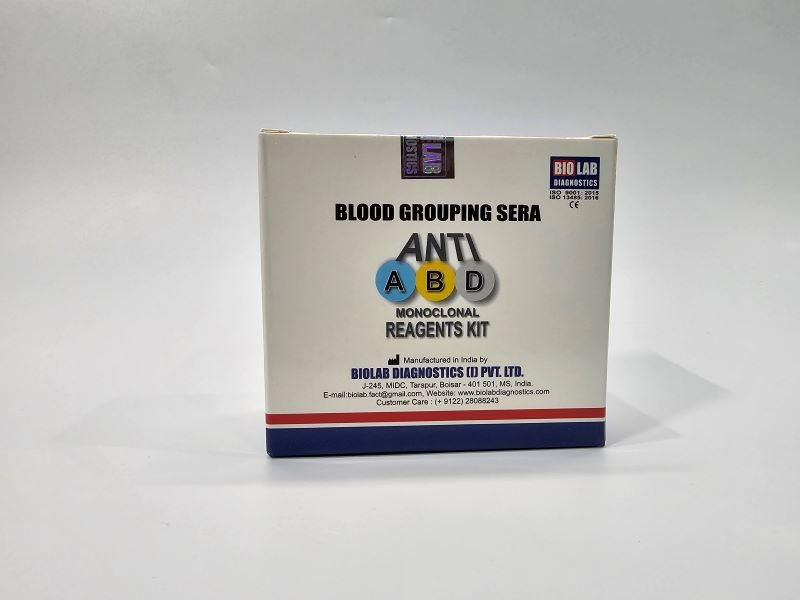

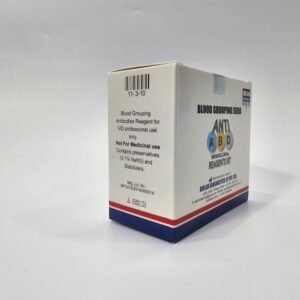
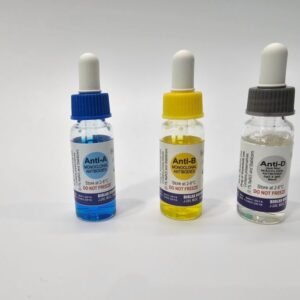
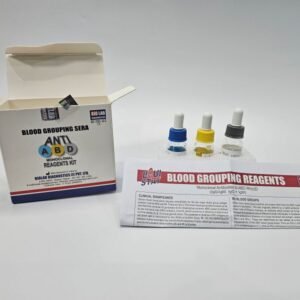
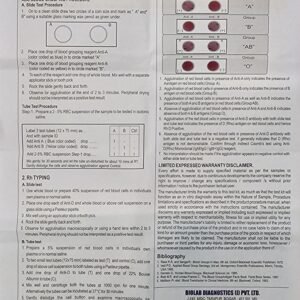

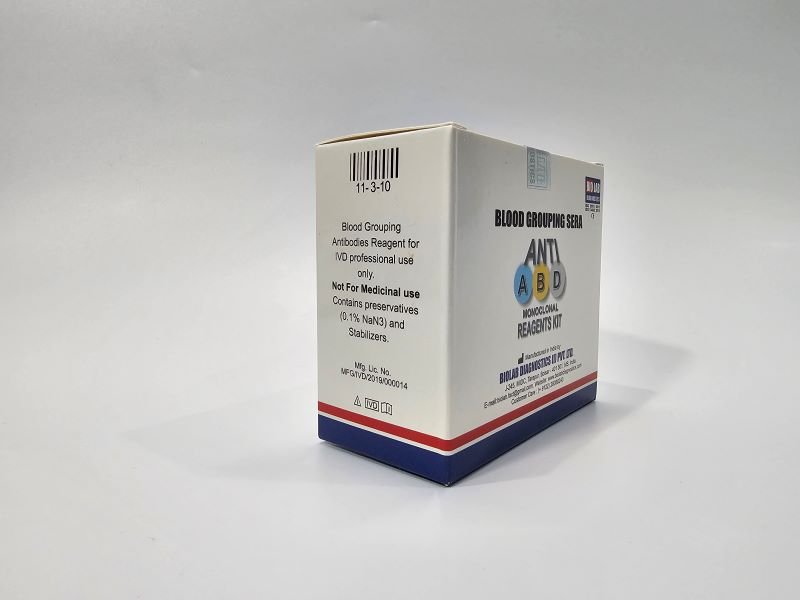
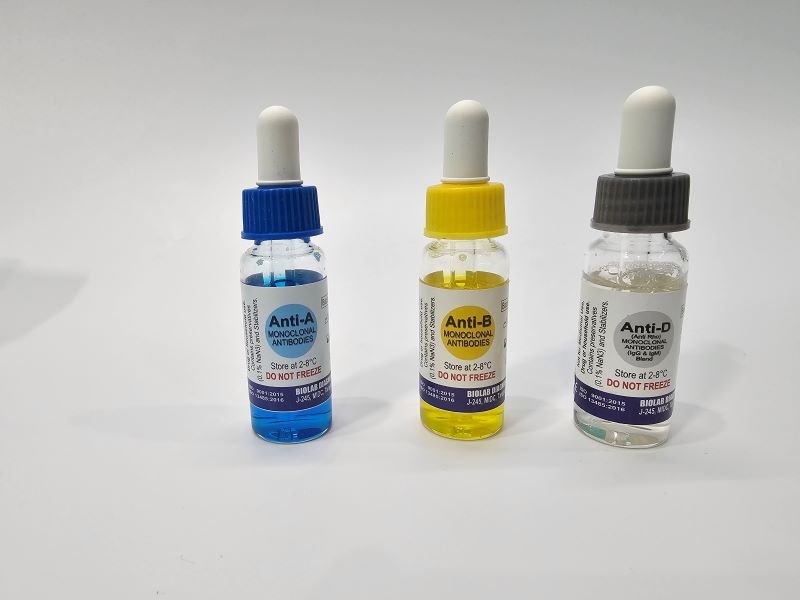

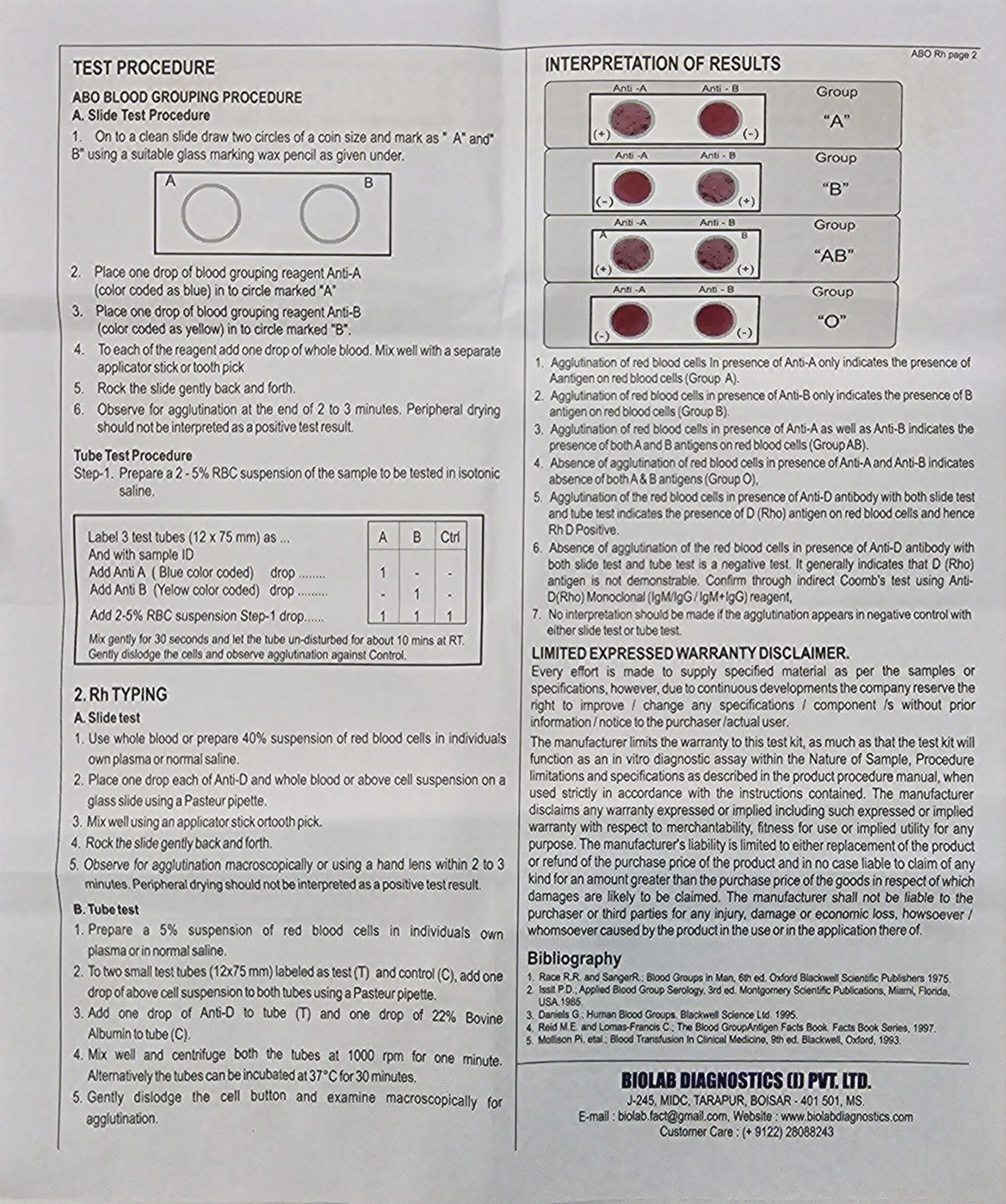
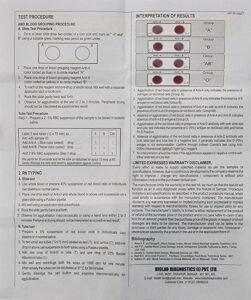
Reviews
There are no reviews yet